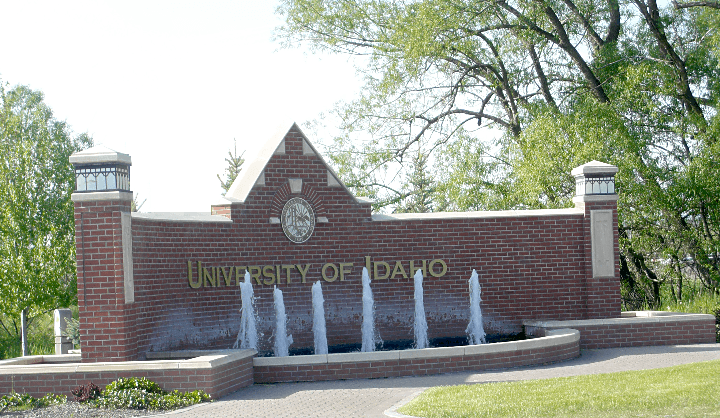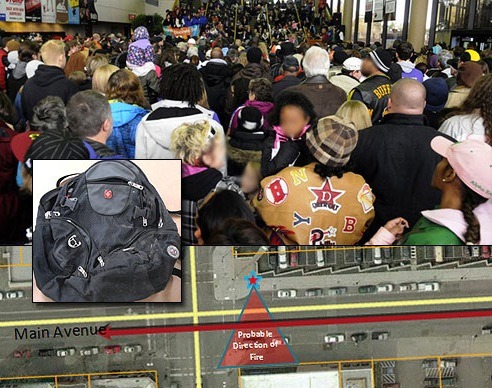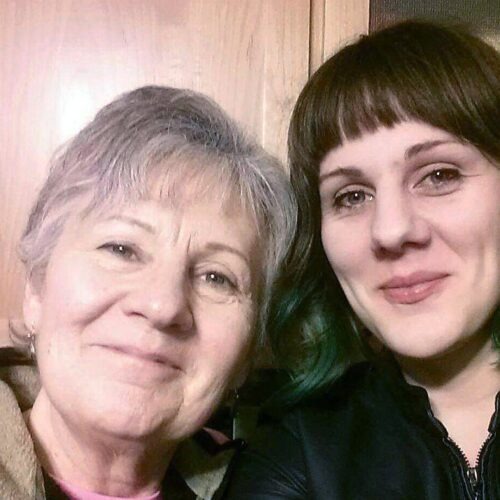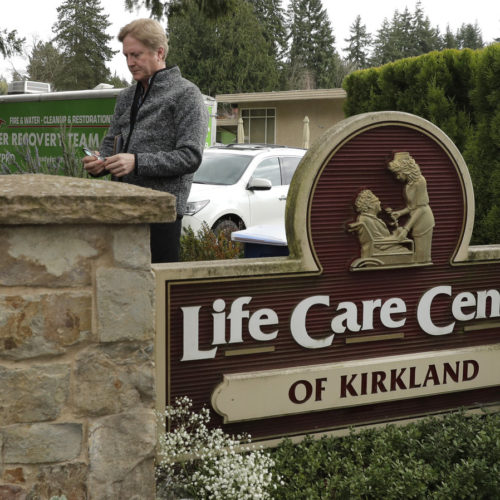
Idaho Colleges Look For Budget Help, Possible Enrollment Boost, During Pandemic Downturn
WATCH
Like most colleges, the University of Idaho in Moscow is dealing with how to control rising coronavirus cases around campus. Recent cases connected to the University’s Greek system have made the school push for more testing. Unlike nearby Washington State University in Pullman, the UI has a hybrid in-person and virtual model this fall semester.
Kevin Richert covers schools for Idaho Education News. He said on a recent episode of NWPB’S Uniquely NW News that the university is also dealing with a budget picture that was bad at the beginning of this year, and made worse by the pandemic.
“I think what happened at the University of Idaho was very universal to a lot of institutions. When the pandemic hit in March and the U of I had to send all of the students home for spring semester. That was a big hole in the university’s budget in terms of lost revenue,” Richert says. “And that’s on the heels of some serious cash flow issues that the University of Idaho has had to work through over the past couple of years through furloughs, through other reductions. They had just about come up with a plan to get through that financial crisis and then coronavirus hits.”
Idaho colleges have benefited from a total of $50 million dollars from the federal CARES Act for coronavirus economic relief. But that money isn’t designed to offset the previous budget issues.
Meanwhile, many colleges and universities in Washington and Oregon are online only this fall semester due to the pandemic. Some are eyeing a return to in-person instruction in January. In neighboring Idaho, schools are largely in-person or using a hybrid model with some online classes. Richert says colleges there, particularly Boise State, are looking at possible enrollment increases as students from nearby states look for in-person learning options.
“I think there’s an educational motivation here that’s driving the universities and the colleges saying, ‘this is what we want to provide, this is the best possible way to teach students.’ But I think there’s some market share that colleges and universities in the state are hoping to tap into,” Richert says. “Students from states like California or Washington state saying, ‘I want the face-to-face experience “and if I can’t get that in my home state, we’ll just pay the out of state tuition, we’ll go to Idaho, we’ll go to Boise State, and we’ll learn face to-face-there.”
He says like many schools, the University of Idaho is just trying to make it to Thanksgiving break when students will leave campus and will not come back for in-person classes until the spring semester.
Watch the full episode of Uniquely NW News above.
INTERVIEW HIGHLIGHTS:
On the situation at the University of Idaho in Moscow:
What university officials think, is going on here is a series of outbreaks that are tied to the Greek community, to the fraternity houses and sorority houses that are right on the fringe of campus. They don’t think that they’re seeing spread through classroom activities, but nonetheless, the university has told professors that if they wanna go with virtual learning for the time being, they can do that. They’re trying to ramp up testing of all students not just students who live in the fraternities, sororities to try to get a handle on the caseload. U of I is not the only university in the state that’s dealing with a big uptake in cases and a big uptake in cases in their communities.
On getting to Thanksgiving and the spring semester:
What will spring semester look like? How many students will come back for spring semester? Or will some of them just kind of say, “this is too uncertain, ‘there’s too much flux, I had to go online in the middle of the semester when they didn’t want to, I’m just gonna take the semester off, I’m not gonna come back.’ So, nobody really knows what to expect in the spring, they don’t know what it’s gonna look like, they don’t know what enrollment’s gonna look, and if the colleges and universities can at least get through the fall, it might help keep students in the system and keep them coming back and have them come back for the spring.
On why the Idaho colleges and universities largely decided to have this hybrid or in-person model whereas schools in nearby states have not schools in states have not.
When everybody had to close down so abruptly in the spring the colleges and universities really wanted to try to figure out how to get back to some kind of normalcy, some sort of component of face-to-face learning and the administrators will say no and the instructors will say, “no this is what students want, this is what they expected when they sign up in the first place and online learning works for some students, it doesn’t work for other students.’ It’s an interesting thing, Boise state, the largest university in the state. They actually expect that their overall enrollment might actually increase a little bit this fall. And that’s unusual, most colleges and universities are bracing for enrollment decreases including U of I. Boise State is expecting a little bit of an increase in where they think they’re getting the increases is from out of state. Students from states like California or Washington state saying, ‘I want the face-to-face experience, and if I can’t get that in my home state, we’ll just pay the out of state tuition, we’ll go to Idaho, we’ll go to Boise State and we’ll learn face to-face-there.’ So I think there’s an educational motivation here that’s driving the universities and the colleges saying, this is what we want to provide, this is the best possible way to teach students.’ But I think there’s some market share that colleges and universities in the state are hoping to tap into.
On the budget issues the University of Idaho was facing before the pandemic hit:
What happened at the University of Idaho was very universal to a lot of institutions when the pandemic hit in March and the U of I had to send all of the students home for spring semester. That was a big hole in the university’s budget in terms of lost revenue. Yeah, reimbursing students for room and board, reimbursing them for other expenses that other losses they incurred when they had to go home. Just canceling events, canceling on campus events, closing the bookstore, having no bookstore revenue or limited parking revenue. All of those things, it all adds up, it’s all part of the revenue picture for the U of I, for other institutions across the state and across the country, I want to say U of I pegged its spring losses at about $7 million. And that’s on the heels of some serious cash flow issues that the University of Idaho has had to work through over the past couple of years through furloughs, throughout the reductions. They have just about come up with a plan to get through that financial crisis and then coronavirus hits.
On the infusion of money Idaho colleges and universities will get from the federal CARES Act:
What I think what (university officials) would say is that this was desperately needed to cover some of the losses to cover for some of those lost revenues to cover some of the added expenses of going online in the spring and preparing to go face-to-face in the fall. All of these expenses, whether it’s student testing, students screening, whether it’s thermal scanners or plexiglass or preparing classrooms that there’s zoom capable. All of those expenses that’s what the Cares Act helped cover, lost revenues and added expenses, but it really doesn’t cover any of the other financial problems that you U of I was facing right or State University who is facing or that Boise State University is facing right now. They’re coming into it financial crunch down here where they’ve begun furloughing staff and they’ll probably have to continue to furlough staff because a lot of the lost revenue that you really you’re not gonna get it all back and Cares Act it’s a little bit north of $50 million that the public universities received. And while it’s helped it hasn’t completely covered all of their financial challenges and it wasn’t designed to.
On educational outcomes and learning deficiencies because of the sudden shift to online learning:
I think right now there are two ways of looking at it. It’s the educational outcomes that we’re still gonna be measuring this year and beyond, and just the technological challenges. So we’re not gonna get a really clear sense of the educational outcomes right away. I’ll be curious to see what the fall reading scores are for young kids for kindergarten through third graders and try to get a sense of how are kids learning to read? How are they learning reading skills in for a lot of students in an online setting? But we’re also seeing this continued problem of access to technology, access to reliable technology. Speaking of Cares Act money, the state is putting another $50 million into a grand program it’s gonna launch later this month, to provide families money, to offset the cost of a computer or a laptop or internet connection. All of these things that all of a sudden, the state is realizing, we don’t have the universal technological access that we need to make the move to online learning in K-12 environment. In rural districts, but even in urban districts there are families that are really struggling with just getting their kids plugged in and getting them in a place where they can learn.
Related Stories:

10 Years After White Supremacist Tried To Bomb Spokane’s MLK Parade, Extremism Is More Mainstream
This week marks 10 years since a white supremacist attempted to bomb the Martin Luther King Junior Day parade through downtown Spokane. The bomb was discovered and defused just in the nick of time. But the effects of extremist ideologies in the region lived on. Journalist Leah Sottile examined that in the podcast Bundyville, from Oregon Public Broadcasting. Leah spoke with Scott Leadingham in August 2019 about the podcast’s second season and the anti-government movement in the region.

Yakima Journalist Who Lost Her Mom To COVID: Don’t Let Gatherings This Season Take Yours
Emily McCarty is a Yakima-based reporter for Crosscut/KCTS. Her mom, Mary, died in a Spokane hospital in November, four days after being diagnosed with COVID-19. McCarty wrote about her mom and her family’s personal experience in an essay titled “I lost my mom to COVID-19. Don’t let the holidays steal yours.”

COVID First Hit Long-Term Care In Puget Sound Region. Now It’s Hitting Home In Rural Areas
Some of the hardest hit places have been long-term care facilities in rural areas like Tonasket in Okanogan County, and in central Washington. At least three care facilities in Grant County have reported outbreaks and deaths since a large wedding near Ritzville last month attended by some care facility staff who later tested positive for COVID-19. But a definitive connection between those outbreaks and the wedding remains unclear.















